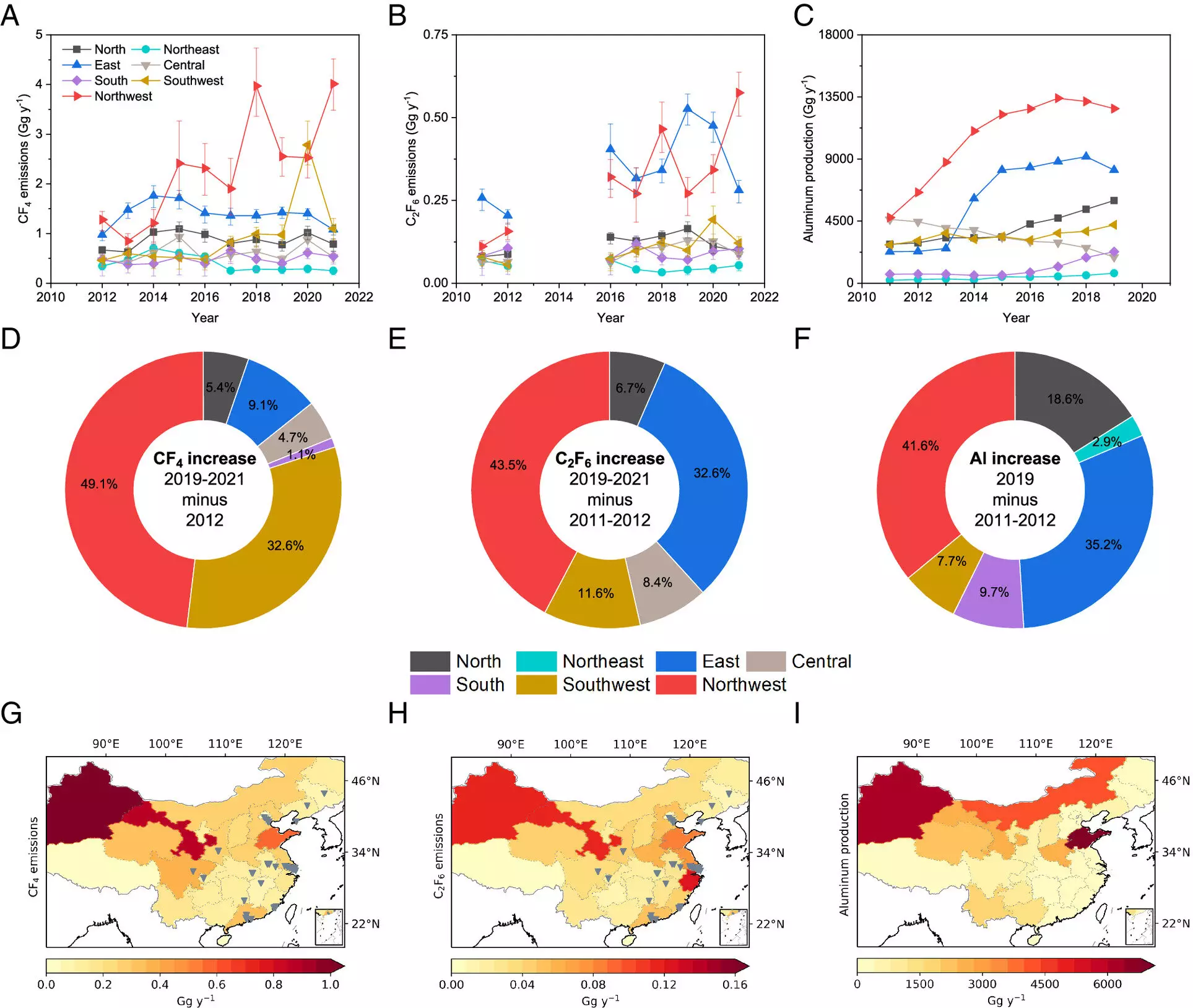In the ongoing battle against climate change, it is essential to understand the varying impacts of different greenhouse gases on the environment. Not all greenhouse gases are created equal, with some being far more potent in their ability to trap heat in the atmosphere than others. This disparity in global warming potential (GWP) has important implications for our efforts to limit global temperature increases and mitigate the effects of climate change. One group of greenhouse gases, known as perfluorocarbons (PFCs), stands out for its exceptionally high GWPs and long atmospheric lifespans, making them a significant concern for climate scientists and policymakers.
Recent studies have highlighted a worrying trend in the emissions of three PFCs in China – tetrafluoromethane (PFC-14), hexafluoroethane (PFC-116), and perfluorocyclobutane (PFC-318). These studies, based on atmospheric observations and high-resolution models, reveal a rapid increase in Chinese emissions of these potent greenhouse gases over the past decade. The rise in PFC emissions from China has played a dominant role in driving up global emission levels for these gases, posing a significant roadblock to achieving the ambitious climate goals set out in the Paris Agreement.
The studies identify key sources of PFC emissions in different regions of China. In the less-populated western regions, substantial emissions of PFC-14 and PFC-116 are linked to the aluminum industry, while the semiconductor industry contributes to emissions in the more economically developed eastern regions. These emissions result from byproducts of aluminum smelting and the production of semiconductors and flat panel displays, highlighting the role of industrial processes in driving PFC emissions in China.
The sharp rise in Chinese emissions of PFCs, particularly PFC-318, highlights the urgent need for targeted mitigation strategies to address this growing threat to the climate. The overlap between regions with high PFC-318 emissions and factories producing polytetrafluoroethylene (PTFE) suggests that industry-specific measures, such as improved recycling programs and technological advancements, could help reduce emissions from these sources. Phasing out PFC emissions is crucial for achieving global climate targets and requires coordinated efforts from both policymakers and industries to implement effective solutions.
As we grapple with the challenges of climate change, the increasing emissions of potent greenhouse gases like PFCs in China serve as a stark reminder of the urgent need to take action. By identifying the sources of these emissions and implementing targeted mitigation measures, we can work towards a more sustainable and climate-resilient future. The findings from these studies underscore the importance of understanding the nuanced impacts of different greenhouse gases and the critical role of emissions reduction in achieving our climate goals.


Leave a Reply